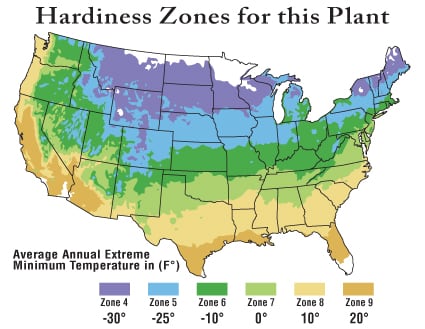Black Walnut
Plant Type: Dormant, bare-root
Zones: 4-9
Soil Type: Clay, Loamy & Sandy Soils
Site Selection: Full Sun
Mature Height & Width: 60-80' Height and 40-60' Spread
Growth Rate: Moderate - 12-24" per year once established
Moisture Requirements: Average soils






Black Walnut
Juglans nigra
The Black Walnut is a grand tree that likes fertile rich hillsides where it is effective against erosion. This tall tree produces walnuts for yourself and backyard wildlife. A good shade tree, leaves turn a bright yellow color in autumn. May self pollinate, but plant two or more to ensure proper pollination. *Use caution if you plan on planting Black Walnut near existing trees as the roots produce a substance called juglone that can be toxic to other trees.
The Black Walnut is sometimes known as the American Walnut.
The Black Walnut is a large tree that produces prized walnuts. This tree does best on deep, fertile and well drained soils, but will tolerate clay and sandy soils as well.
It is important to note that the roots of this tree generate a substance called juglone. This substance can be toxic to other trees or plants planted near a black walnut and may even cause them to perish. Contact your local county forester or university extension office for more information on acceptable trees and shrubs that will grow near this tree.
Common uses for the Black Walnut:
- Grown for valuable timber
- Lumber used in cabinets, floors, furniture and gun stocks
- Personal or commercial walnut production for eating and cooking
- Tall shade tree with beautiful fall color
- Hillside erosion control
- Good wildlife value
The Black Walnut is eaten by woodpeckers, squirrels, red fox and a variety of birds. The tree is commonly used for perching or nesting of many types of birds.
Product Questions
If planting for nut production, we recommend consulting this guide: https://extension.missouri.edu/publications/af1011. You may download the publication upon reaching the MU Extension page provided. Here is an additional source which should be of value: https://www.fs.usda.gov/treesearch/pubs/44215
Here is a resource which covers more about planting for timber production https://dnr.wisconsin.gov/sites/default/files/topic/ForestManagement/24315_45.pdf
Here is a powerpoint presentation, another resource: https://www.treefarmsystem.org/stuff/contentmgr/files/1/83513ba128f737e0e618e8756d08b694/files/black_walnut_management_tree_farm.pdf
Some people plant for wildlife habitat. Another application, and typically will have an assortment of trees and shrubs.
We also suggest discussing with your local forestry service. They are the experts when it comes to the types of soils in your location and other factors which will affect your project.





